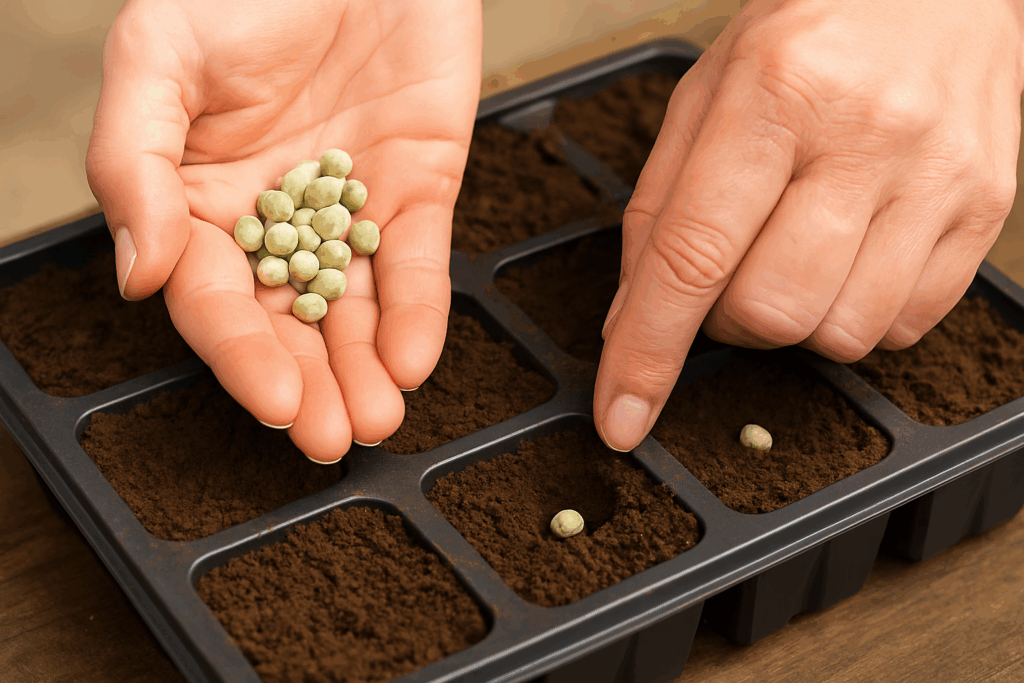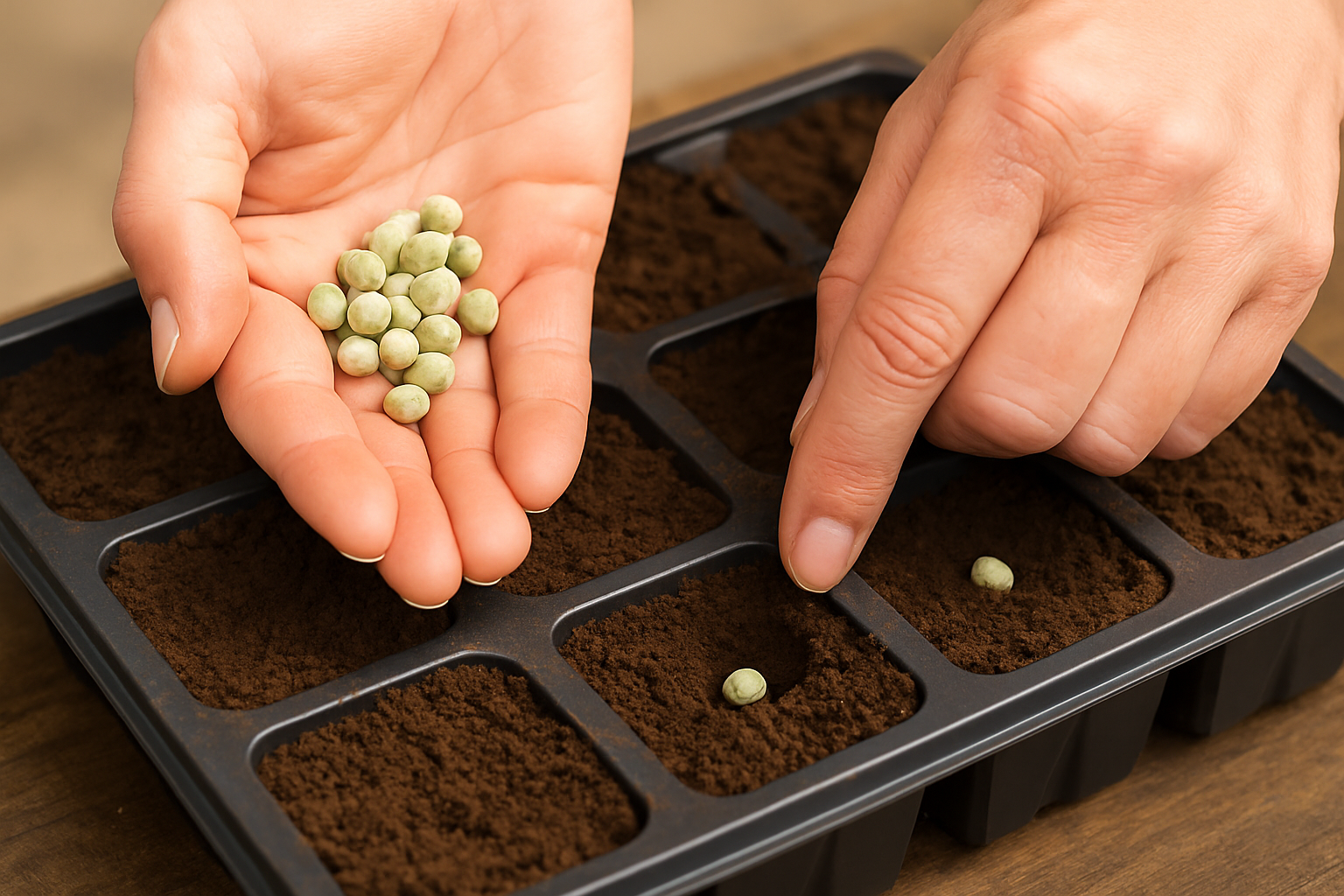
Learning how to grow plants from seed is one of the most rewarding parts of gardening. It’s cost-effective, eco-friendly, and gives you full control over what you grow. Whether you’re filling a garden bed, starting herbs indoors, or saving money by making your own plants, propagation is a core skill every UK gardener should master.
What Does Propagation Mean?
Propagation simply means creating new plants from existing ones. It can be done in several ways — sowing seeds, taking cuttings, dividing rootballs, or encouraging stems to form new roots.
It’s a sustainable and low-cost way to grow your garden, and you don’t need much equipment — just good compost, clean containers, and patience.
Growing Plants from Seed
One of the easiest and most satisfying ways to propagate plants is to grow them from seed. It works well for vegetables, herbs, flowers, and many indoor plants.
Step-by-Step: How to Grow Plants from Seed (UK Conditions)
- Collect your seeds – Save seeds from existing plants after they’ve finished flowering. Leave a few seedheads to dry naturally.
- Store seeds correctly – Keep them in labelled envelopes in a cool, dry place until spring.
- Sow in trays or modules – Fill trays with seed compost and sow evenly. Cover lightly with compost or vermiculite.
- Add gentle heat and light – A warm windowsill, heat mat or LED grow light helps germination.
- Water carefully – Keep compost moist but not soggy.
- Transplant seedlings – Once seedlings are strong enough, move them into individual pots or your garden.
Indoor growers can also use hydroponic systems for reliable germination and faster growth.
👉 See our guides:
Propagation by Division
Division is a classic way to propagate perennials such as hostas, grasses, or rhubarb. It’s best done in spring or autumn when plants are not flowering.
- Lift the plant gently from the soil.
- Use two garden forks or a sharp spade to split the rootball into smaller clumps.
- Replant each section immediately in fresh soil or pots.
This method rejuvenates old plants, prevents overcrowding, and helps maintain strong growth year after year.
Propagation by Cuttings
Many shrubs, herbs, and houseplants can be propagated easily from stem cuttings. It’s one of the quickest ways to make new plants identical to the parent.
Types of Cuttings
- Softwood cuttings – taken in spring or early summer from new shoots (mint, basil, fuchsia).
- Semi-ripe cuttings – mid-summer when stems begin to harden (lavender, rosemary, hydrangea).
- Hardwood cuttings – autumn or winter from mature stems (roses, shrubs, currants).
How to Take Cuttings
- Cut a healthy 8–10 cm shoot just below a leaf node.
- Remove lower leaves.
- Dip the end in rooting hormone.
- Place into a pot of gritty compost or perlite mix.
- Water lightly and cover with a clear lid or bag to retain humidity.
Most cuttings root within a few weeks if kept warm and moist.
Propagation by Layering
Some plants naturally root when stems touch the ground — strawberries and climbers are good examples.
To propagate by layering:
- Bend a healthy stem or runner to the ground.
- Pin it down with a wire peg or small stone so it touches moist soil.
- Wait for roots to form, then cut away from the parent plant.
Layering works particularly well for strawberries, clematis, honeysuckle and trailing houseplants.
For ideas on growing indoors or in small spaces, visit our Indoor Growing UK Hub.
Propagation by Root Cuttings
Certain perennials — like oriental poppies, acanthus, and phlox — can be propagated by root cuttings.
To do this:
- Lift the plant in winter when it’s dormant.
- Cut thick, healthy roots into 5 cm sections.
- Plant horizontally in trays filled with compost.
- Keep slightly moist and frost-free until new shoots appear.
This technique uses the plant’s natural ability to regenerate from root fragments.
Essential Tools and Supplies for Growing from Seed
You don’t need a lot of equipment to start growing plants from seed — just a few basics to create the right environment for germination and early growth. Most gardeners already have many of these items at home.
🪴 Basic items you’ll need
- Seeds: Choose fresh, good-quality seeds or collect your own from healthy plants. Always check the use-by date to ensure strong germination.
- Containers: Seed trays, modular pots, or even recycled options like yogurt pots, toilet-roll tubes, or egg cartons.
- Seed compost or starting mix: Use a fine, peat-free compost that drains well but holds enough moisture for seedlings.
- Water: Seeds need consistent moisture. A spray mister or gentle watering can works best to avoid washing seeds away.
- Light: A bright, sunny windowsill provides all the light most seedlings need.
- Temperature: Most seeds germinate between 15–20°C — a warm indoor space is usually ideal.
🌿 Optional extras (for faster or more reliable germination)
If you’d like to improve success rates or start sowing earlier in the year, a few simple extras can make a big difference:
- Propagation lid or mini greenhouse – keeps humidity and warmth steady.
- Heat mat – encourages quicker germination in cool rooms or early spring.
- LED grow light – extends daylight hours if you’re short on natural light.
- Rooting hormone powder – useful when taking cuttings rather than sowing seeds.
- Labels and pencil – helps keep track of different varieties.
Recommended Starter Kit for Growing from Seed
| Item | Why It Helps | Example Product |
|---|---|---|
| Seed trays with lids | Ideal for sowing and early growth indoors | Reusable Seed Tray Set |
| Peat-free seed compost | Fine texture for reliable germination | Westland Peat-Free Seed Compost |
| Mini greenhouse | Keeps seedlings warm and protected | Christow 4 Tier Mini Greenhouse |
| Spray mister | Gentle watering avoids disturbing seeds | Hozelock Spray Mister |
| Plant labels | Keeps varieties clearly marked | Reusable Plant Labels Pack |
This section contains affiliate links. As an Amazon Associate, HomeGrower may earn from qualifying purchases — at no extra cost to you.
Common Mistakes When Propagating
Even experienced gardeners make these simple errors:
- Over- or under-watering seedlings
- Taking cuttings from unhealthy plants
- Using dull or dirty tools
- Forgetting to label seeds
- Sowing too early in cold conditions
Learning to avoid these will save time and help more of your seedlings thrive.
Final Thoughts
Learning how to grow plants from seed UK style is one of the most rewarding things any gardener can do. It connects you directly to the growing process — from that first tiny sprout to a thriving plant you’ve nurtured yourself.
By understanding propagation methods like seed sowing, division and cuttings, you can create endless new plants without spending a fortune. All it takes is patience, light, and the right compost to turn a few seeds into a flourishing garden.
Start small with herbs or strawberries and build confidence as you go. Whether you’re growing on a sunny windowsill or in a garden greenhouse, mastering propagation gives you complete control over what you grow and how it thrives.
Learn more from the Royal Horticultural Society Propagation Guide.
Explore HomeGrower Hubs
Looking for more growing inspiration? Explore our main resource hubs:
- Indoor Growing UK
- Grow Lights UK
- Greenhouses & Polytunnels UK Resource Hub
- Garden Tools & Equipment UK
FAQs – How to Grow Plants from Seed (UK Guide)
What is the best way to grow plants from seed in the UK?
The best way to grow plants from seed in the UK is to start indoors in spring using seed trays and peat-free compost. Keep them in a warm, bright place such as a sunny windowsill until the seedlings are strong enough to plant outside.
When should I start growing plants from seed in the UK?
Most seeds should be sown between February and April, but this depends on the crop. Tender plants such as tomatoes or peppers benefit from an early start indoors, while hardy vegetables can be sown directly outdoors once the soil warms.
Do I need special equipment to grow plants from seed?
You don’t need much — just seed trays, compost, and a warm spot with plenty of light. Optional extras such as propagation lids, heat mats, or LED grow lights can help improve germination rates in cooler UK conditions.
How long does it take for seeds to germinate?
Most seeds germinate within 7 to 21 days, depending on temperature and light. Keeping soil evenly moist (not wet) and maintaining warmth will help ensure success when learning how to grow plants from seed UK gardeners’ way.
Can I reuse old compost or trays when growing from seed?
You can reuse trays if they’re cleaned thoroughly, but always use fresh seed compost each season. Old compost can carry diseases or lack the nutrients young seedlings need to thrive.
What are the easiest plants to grow from seed in the UK?
Herbs like basil and parsley, salad leaves, tomatoes, courgettes, and sweet peas are all ideal for beginners learning how to grow plants from seed in the UK. They germinate quickly and show visible progress within weeks.
Can I grow plants from seed all year round?
Yes, but results depend on light and temperature. Indoors, with the help of grow lights or a heated propagator, you can start seeds almost any time of year — especially herbs and leafy greens suited to cooler UK conditions.
